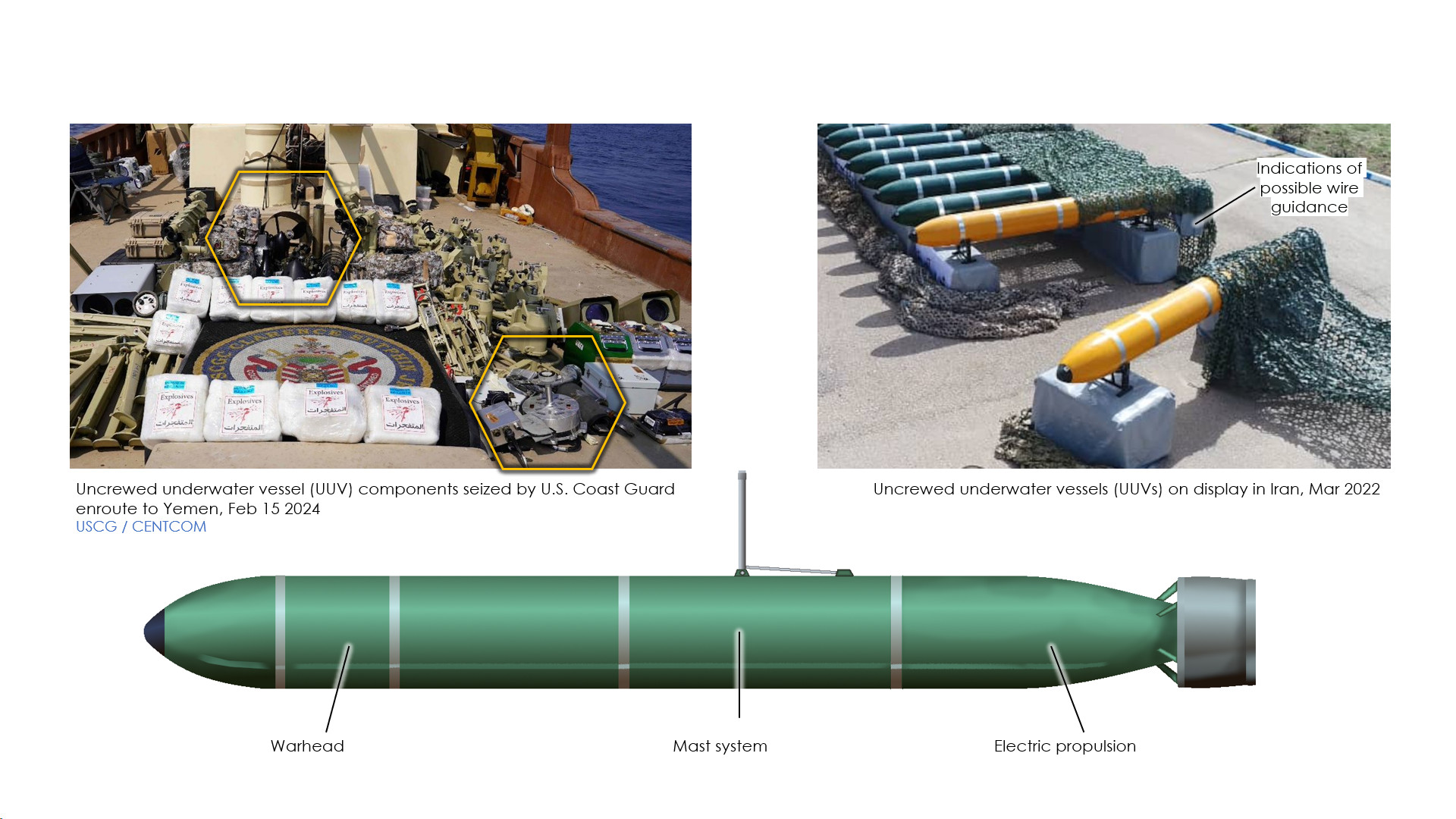H I SUTTON

Merchant ships and warships in the Red Sea have been under frequent attacks from anti-ship cruise missiles, anti-ship ballistic missiles, explosive surface drones, and aerial drones. Now a new threat has emerged from underwater.
On Feb. 18, U.S. Central Command announced naval forces in the Red Sea destroyed an uncrewed underwater vehicle (UUV) in Houthi-controlled waters around Yemen. This is the first time that the Houthi Movement has been observed operating UUVs since attacks began last October.
Just a few days earlier, CENTCOM issued a press release about the January U.S. Coast Guard interdiction of a weapons shipment from Iran to the Houthis in Yemen. The catch included components for uncrewed surface vessels (USVs) and, notably, uncrewed underwater vehicles (UUVs), according to the photos released by CENTCOM. The weapon seizure connects Houthi’s UUV threat to Iranian-supplied vehicles and techniques.
Iran has a long tradition of unconventional naval warfare which has become more refined in recent years. Many of these platforms are now uncrewed, including boats, aerial drones and underwater drones, based on images systems released by the Iranian government. Hamas has also touted its possession of UUVs in Gaza, according to images the armed group released in November as reported by Naval News.
The U.S, has not released details about the UUV destroyed by U.S. forces this week or the parts seized. The photographs released show a propeller (screw) section that is consistent with UUVs used by Iran.
The UUV, along with those seen in Iran, appears similar to a torpedo. orone-way attack underwater drone (OWA-AUVs). Generally, these have a greater range than a torpedo but are slower, making them most effective against static targets such as ships in port or at anchor. The type typically used in Iran, according to observers, can be fitted with a short mast, possibly to observe the target before attacking. It is possible that the device can be remotely operated by a wire, similar to wire-guided torpedoes. This would allow it to engage moving targets.
Iran may have previously used these against tankers off the coast of the United Arab Emirates. Hamas has attempted to use similar vehicles against Israel’s offshore energy infrastructure, Israeli officials claimed in 2021.
Underwater weapons are inherently harder to detect and counter than surface vessels. They are more likely to surprise the target and can cause holes below the waterline which can be more damaging. They also require a different set of tactics for the escorting warships to counter them. Ukraine has amply demonstrated the effectiveness of explosive-laden surface drones (USVs) against Russian platforms. The Houthis have had less success, largely due to the presence of U.S. Navy and allied warships in the region.
No comments:
Post a Comment